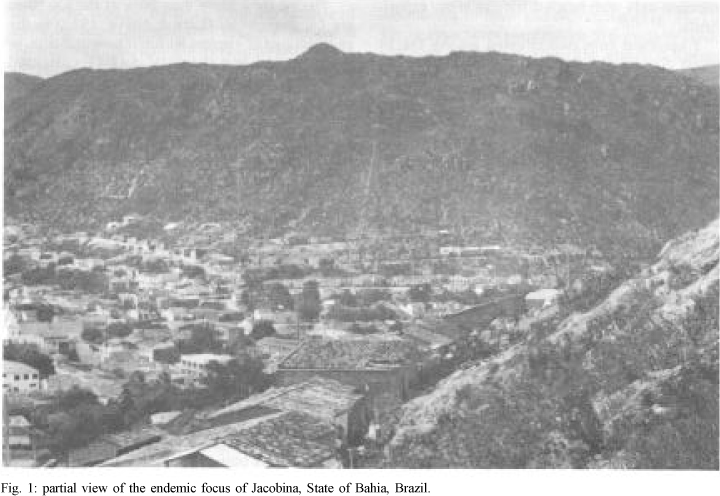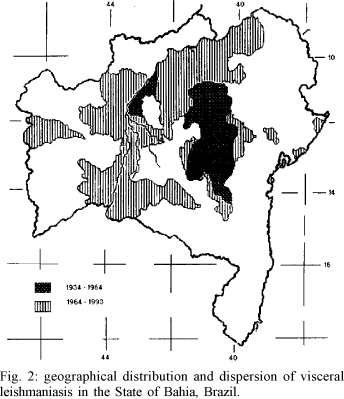The laboratory and field observations summarized in this paper on visceral leishmaniasis ecology in the State of Bahia, Brazil are based on the author's observations over the past 35 years in a number of state's foci, public health records and literature citations. The disease is endemic with epidemic outbreaks occurring every ten years and its geographical distribution is expanding rapidly in the last years. Leishmania chagasi is the main ethiologic agent of the visceral leishmaniasis but Le. amazonensis s. lato was the only leishmania isolated by other authors from some visceral leishmaniasis human cases in the state. Lutzomyia longipalpis (with one or two spots on tergites III and IV and two sized different populations) was epidemiologically incriminated as the main vector. It was found naturally infected with promastigotes, and it was infected with four species of leishmanias in the laboratory. Although the experimental transmission of Le. amazonensis by the bite of Lu. longipalpis to hamsters was performed, the author was not successful in transmitting Le. chagasi in the same way. The dog is the most important domestic source for infection of the vector, however it is not a primary reservoir. The opossum Didelphis albiventris was found naturally infected with Le. chagasi but its role as reservoir is unknown. Foxes and rodents were not found infected with leishmanias in Bahia.
visceral leishmaniasis; ecology; epidemiology; geographical distribution; dispersion; reservoirs; Leishmania chagasi; Leishmania amazonensis s.l.; Lutzomyia longipalpis









